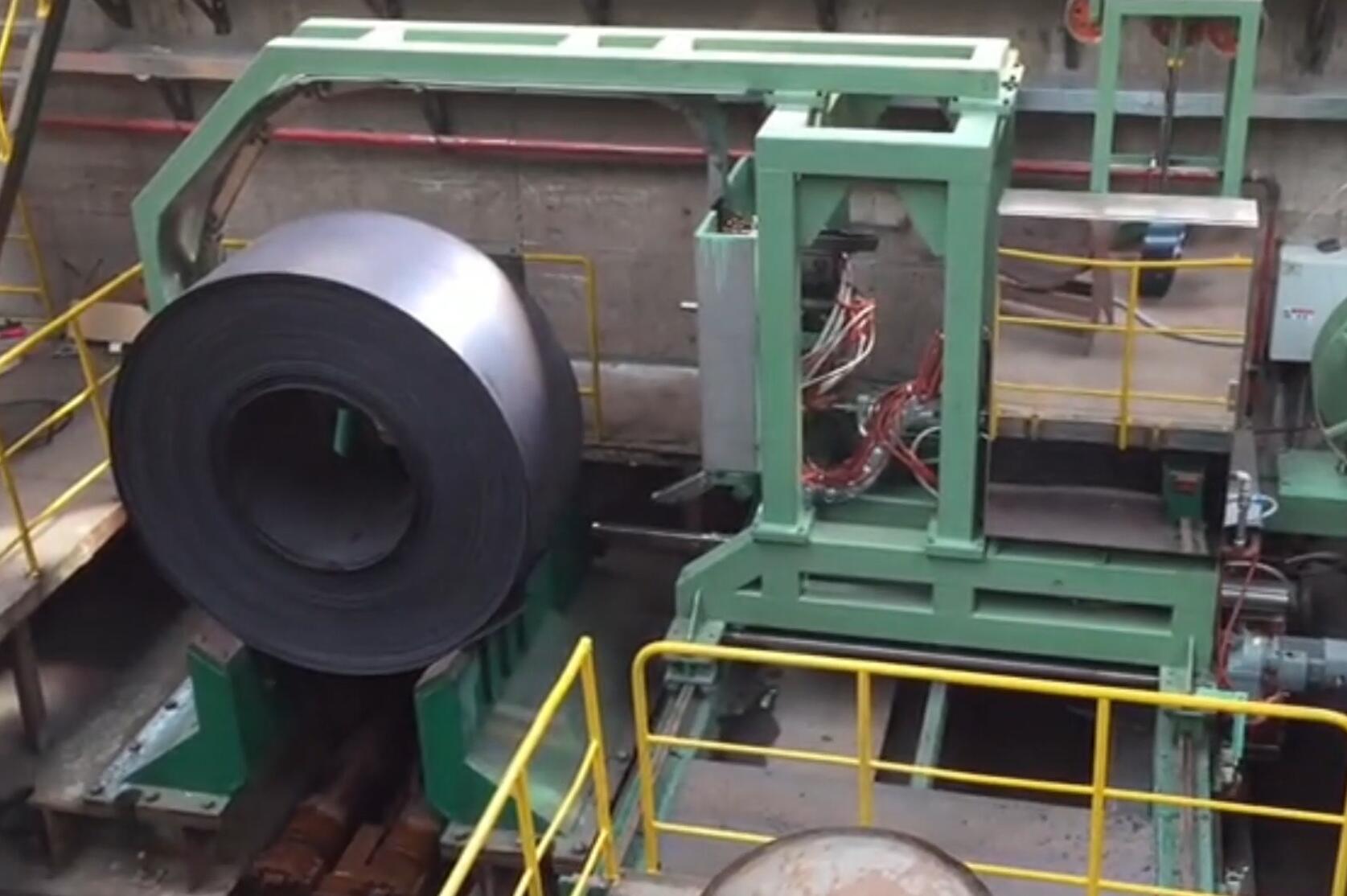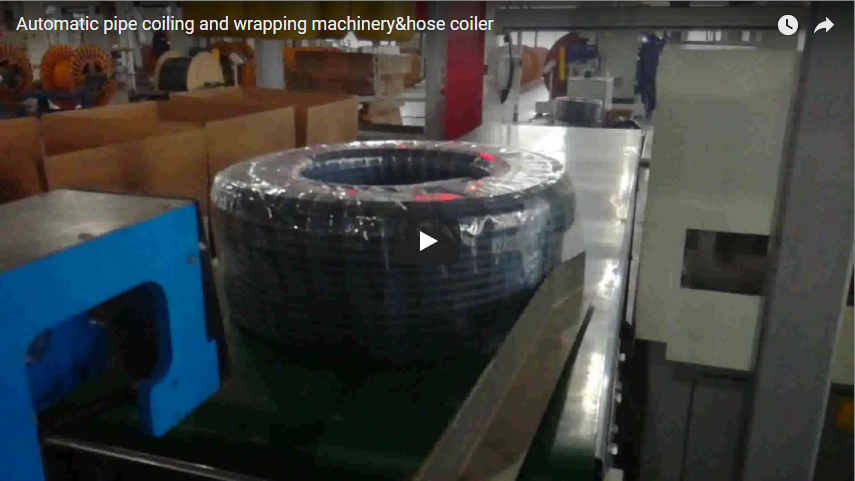Optimizing Steel Logistics: A Deep Dive into Hot Rolled Coil Strapping Technology
Introduction: The Critical Role of Strapping in Hot Rolling Mills
In the demanding environment of modern steel production, the secure and efficient handling of hot rolled steel coils is paramount. Immediately following the hot rolling and coiling process, coils possess significant retained heat and mass, presenting unique challenges for downstream logistics and storage. Automated strapping systems are mission-critical infrastructure, ensuring coil integrity, facilitating safe handling, and optimizing the entire production workflow. This article explores the technology, operational parameters, and benefits of advanced hot roll steel coil strapping machines.
Core Technology: Precision Engineering for Harsh Environments
Modern hot coil strapping machines represent a convergence of robust mechanical engineering and sophisticated automation, designed to operate reliably under extreme conditions including high temperatures, heavy loads, and abrasive mill scale.
Advanced Strapping Heads
The heart of the system is the strapping head, responsible for feeding, tensioning, sealing, and cutting the strap. Key technological advancements, often protected by patents (e.g., focusing on tensioning mechanisms or sealing integrity like those found in US Patent families concerning friction-weld processes), include:
- High-Tension Capabilities: Ensuring tight, secure strapping that prevents coil telescoping during subsequent handling and cooling. Tension values are precisely controlled via PLC systems.
- Sealing Technologies: Predominantly utilizing notch-type seals for steel strapping or friction-weld seals for high-temperature resistant PET strapping, providing high joint efficiency crucial for heavy coils. Research often compares the long-term integrity of different seal types under varying load and environmental conditions.
- Durability: Components within the strapping head, such as strap guides and cutters, are manufactured from hardened, wear-resistant materials to withstand the abrasive nature of steel scale and ensure long service life, a frequent topic in maintenance-focused industry publications.

Steel col strapping machine FHOPE Automation and Control Systems
Integration with the overall plant automation (Level 2/MES systems) is standard. These systems feature:
- PLC Control: Programmable Logic Controllers manage the entire strapping sequence, coil positioning, safety interlocks, and diagnostic reporting.
- Sensor Integration: Sensors detect coil presence, measure diameter and width for correct strap placement, and monitor system status for fault detection.
- HMI Panels: Human-Machine Interfaces provide operators with real-time process visualization, parameter adjustment capabilities, and maintenance diagnostics.
Operational Workflow and Handling Integration
The strapping process is seamlessly integrated into the coil handling logistics immediately after the downcoiler.
Coil Transport and Positioning
- Coil Car Integration: The strapping machine typically interfaces with a coil car or walking beam conveyor system, which transfers the hot coil from the downcoiler discharge area to the strapping station.
- Transverse Movement Capability: As demonstrated in the video, the strapping machine often possesses the ability to shift laterally (left/right). This feature is crucial for:
- Applying multiple straps (typically 1, 2, or 3) at precise circumferential positions as required by downstream processes or customer specifications.
- Moving the machine clear of the coil transport path for maintenance access or bypass operations, enhancing operational flexibility and safety. Industry safety standards (e.g., ISO 12100 risk assessment guidelines) often mandate such provisions.
Automated Unloading
- C-Hook Compatibility: The system is designed to allow direct overhead crane access using C-hooks or coil grabs for efficient unloading of the strapped coil, minimizing handling time and potential damage. The open-top design facilitates this critical step.
Key Performance Parameters
The specifications of hot roll steel coil strapping machines are tailored to the specific requirements of the rolling mill:
- Coil Dimensions:
- Outer Diameter (OD): Typically up to 2500 mm
- Inner Diameter (ID): Standard mill sizes (e.g., 760 mm)
- Coil Width: Ranges typically from 600 mm to 2100 mm
- Coil Weight: Capacities often exceed 30 metric tons.
- Strap Material:
- High-tensile Steel Strapping (e.g., 32mm width, >1.0mm thickness)
- High-Temperature PET Strapping (selected based on coil temperature profile and strength requirements)
- Number of Straps: Programmable, commonly 1, 2, or 3 radial straps per coil.
- Cycle Time: Optimized for mill throughput, often achieving strapping cycles under 60 seconds per coil, including handling.
Benefits and Advancements Driving Adoption
Investing in modern hot coil strapping technology yields significant operational and economic advantages:
- Enhanced Efficiency and Throughput: Automation drastically reduces manual intervention, synchronizing strapping with the rolling mill's pace and minimizing bottlenecks. Studies published in journals like Iron & Steel Technology frequently benchmark the throughput gains from automated versus manual or semi-automated systems.
- Improved Safety: Automating the strapping process removes personnel from the hazardous area around hot, heavy coils, significantly reducing the risk of burns and impact injuries. Integrated safety features like light curtains, fencing, and emergency stops comply with stringent international safety regulations (e.g., CE Machinery Directive).
- Product Integrity Protection: Consistent, high-tension strapping prevents coil layers from shifting (telescoping) or unwinding during cooling, handling, and transport, preserving coil quality and reducing scrap or rework.
- Reduced Labor Costs: Automation minimizes the need for manual strapping operators, leading to direct labor cost savings and allowing personnel reallocation to higher-value tasks.
- Reliability in Harsh Conditions: Designed with robust components, heat shielding, and effective sealing against dust and scale ingress ensures high uptime and lower maintenance requirements compared to less specialized equipment.
Conclusion: An Indispensable Asset in Steel Manufacturing
The hot roll steel coil strapping machine is far more than auxiliary equipment; it is a vital component of the modern steel production line. By leveraging advanced automation, robust engineering, and precise control systems, these machines ensure the safe handling, secure transport, and preserved integrity of valuable steel coils. Their ability to integrate seamlessly into the production flow, enhance operator safety, and operate reliably in demanding mill environments makes them a cost-effective investment that directly contributes to overall plant efficiency and product quality, reflecting the high standards expected in the industry, often highlighted in publications like MM MaschinenMarkt.
More information for steel strapping machine from FHOPE:






